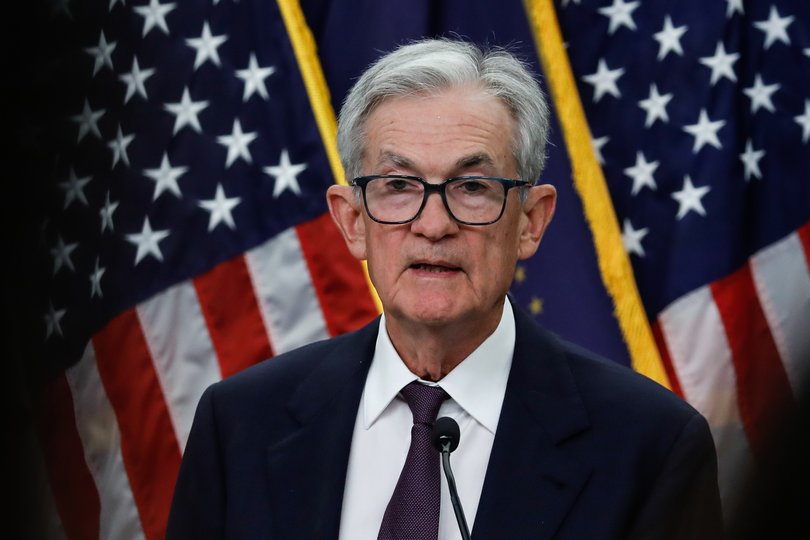TOM RICHARDSON: Private credit is a giant leap of faith but can Australia’s $200b bet survive a US recession?

Most Australians don’t know it, but they’ve loaned some $200 billion to companies and business-people who would otherwise struggle to get credit.
Some investors and regulators are worried these high-return investments, known as private credit, are riskier than many realise. That’s because loans offered to riskier business borrowers may not be paid back in a recession.
Australians have direct, or indirect exposure, to private credit funds largely through their superannuation savings, or investments made on their behalf by financial advisers. Anyone can invest in credit funds on the Australian Securities Exchange.
Sign up to The Nightly's newsletters.
Get the first look at the digital newspaper, curated daily stories and breaking headlines delivered to your inbox.
By continuing you agree to our Terms and Privacy Policy.Private credit funds have soared in number over the past few years and typically advertise annual income returns to investors of 8 to 10 per cent, or more, per year. They produce this yield for investors by funding thousands of loans to small-to-medium-sized businesses across a range of industries often in the US.
“If the economy does roll over, those funds trying to deliver an extra two or three per cent are taking way more risk,” says Darryl Wilson, the founder and chief executive of Affluence Funds Management.
“So, if you look at a fund yielding above 9 per cent, you’ve got to ask yourself, where’s the risk? And if you don’t understand where the risk is then you probably shouldn’t be there, and if you do understand, then you need to ask, ‘are you happy to take it?’ ”
The worsening US jobs market could be the start of a test of the health of private credit. North America’s labour market was bad enough to prompt the US Federal Reserve to ease interest rates on Thursday and signal two more cuts over the last three months of 2025.
This end-of-year scramble to support the US jobs market may not prevent a more serious economic downturn and should signal rising risk for Australia’s private credit investors.
US jobs market is weak
“Because the private credit sector has rapidly grown, it has never experienced a severe downturn at its current size and scope, and many features designed to mitigate risks have not yet been tested,” the International Monetary Fund (IMF) said in a report on the industry.
The kicker is that the funds’ success, or failure, depends on the ability of their business borrowers to pay back high-interest loans, even if Donald Trump’s tariff-hit economy topples over.
In terms of large shocks, the hair-raising jobs data in the US points to an economy slowing due to a one-man Presidential tariff war, policy uncertainty, and stubborn inflation.
The monthly average of 29,000 jobs created across the past three months means US employment is now worse than at any time under President Trump’s predecessor, Joe Biden.
“Default rates in private credit have been relatively low and less frequent in recent times relative to comparatively risky investments, such as in the syndicated loan or high-yield bond markets,” said the Reserve Bank of Australia in 2024.
“The sector has greater capacity than other forms of lending to postpone losses and defaults due to the bilateral nature of lending agreements. This has made it more resilient thus far in the cycle, but could increase the sector’s vulnerability to large shocks.”

Therefore it’s foolish to underestimate the risk that a weak jobs market and rising inflation on rate cuts sends the US economy into a recession, with rocketing bad debts a knockout blow for the $200 billion funnelled into private credit.
The private credit managers argue bad debt risk is offset as the loans are made to thousands of companies, across dozens of uncorrelated sectors. In theory, this means if a loan turns sour at one company, or across one industry, then the profits from the other loans are sufficient to offset the losses on bad loans.
However, history shows a serious downturn in the economy hurts the destiny of all businesses together.
Mr Wilson says there are good private credit managers in the market in his view, but that his investment business turns down a lot more for approval than it accepts.
“Mostly it comes down to the risk/reward not being worth it,“ he says. “Particularly for retail (investors) there’s a lot of products we don’t really like, but there’s a lot we do like as there’s a lot of good managers in the space. But you have to be careful particularly late in the (economic) cycle, as people forget what happens when you have downturns it gets a lot harder.”
Financial alchemy, liquidity
Another problem amplified in the event of a downturn is liquidity risk. It’s defined as the ability to readily buy or sell units held in a private credit fund.
As the loans to business borrowers are illiquid (they cannot be immediately called in for cash), then the fund’s investors are often restricted by how much of their investment they can sell for cash and how often.
“There’s a lot of money piling into evergreen funds where people are being promised liquidity but the underlying assets are not liquid and it happens every cycle,” says Mr Wilson. “It’s less bad in private credit, than private equity, as every loan has a due date. So ultimately there’s a mechanism to get people out over time, but we’re seeing that mismatch where people are promised liquidity but the underlying portfolios are not that liquid. So you’ve got to be prepared to wait it out in a downturn”
Typically, private credit investors may only be able to sell once every three months and up to a limit of 5 per cent of an underlying fund’s total asset value. Moreover, these are the restrictions imposed in the good economic times, so those in the bad times may prove a shock.
“Liquidity pressures could arise for end investors and spill over to financial markets,” said the RBA’s report. “For example, in the event of a large economic shock, intermediaries may request large amounts of capital.”
In the last big downturn and financial alchemy show of the Great Financial Crisis (GFC) of 2009, it was sub-prime lending and debt repackaged (similar to the marketing label ‘private credit’) that stoked a bad-debt driven liquidity crisis in the financial system.
In private credit today, the managers marketing the products are transferring the bad debt risk from themselves to the end investors in their funds. This is risk transformed, not eliminated.
The private credit managers are also getting paid very high fees based on a fixed percentage of their assets under management.
As an example a typical private credit management fee is 1.75 per cent per annum and the returns advertised of 8-10 per cent are after fees. This means these funds are lending to business borrowers at very high rates, which are the hallmark of genuine default risk.
This means, in terms of remuneration, the managers are incentivised to raise and lend as much money as possible. If the loans blow up, it’s likely the end investors will suffer the largest capital losses. The annual fees charged are also just about the highest you will find anywhere in Australia’s investment management industry today.
ASIC wants a look
The industry is also attracting scrutiny from ASIC. The regulator will release a surveillance report on private credit by November, after revealing key areas of interest are fee disclosures, transparency, asset valuations, conflicts of interest, and data.
“ASIC’s private credit markets funds surveillance is underway in wholesale and retail private markets to assist the agency to better understand current disclosure, distribution, conflicts of interest, valuation, conduct practices and use of ratings,” it said in February 2025.
“This will be supplemented by insights from industry experts to inform the actions the agency will take to maintain integrity, protect investors and promote the quality of Australia’s private credit industry.”
ASIC and the IMF have also flagged that fees, underlying assets, and related party payments in private credit are opaque and complex. This is an understatement.
In reality it feels like the regulators are perhaps behind the curve, with private credit investment one giant leap of faith that’s vulnerable to a downturn. The regulators’ rush to catch up and avoid red faces is more pressing as the US jobs market flashes warnings.

